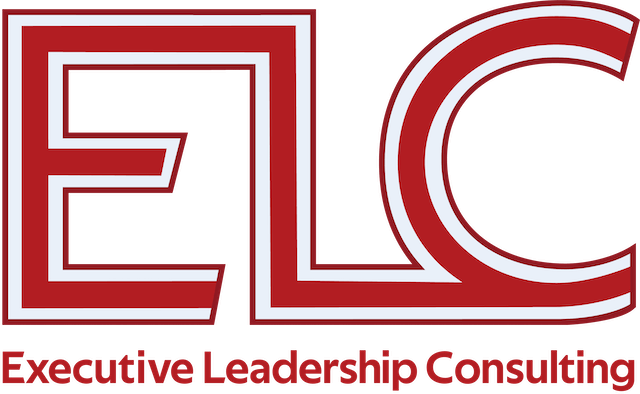Every business wants to grow and be successful, but not every business knows how to go about it. One way to help your company grow is through organizational analysis. This process involves examining the characteristics of your organization, identifying strengths and weaknesses, understanding opportunities and threats, and then selecting the appropriate model to guide your analysis.
Once you have completed an organizational analysis, you can begin taking steps to improve employee satisfaction and alignment, identify gaps in your services or products, and make changes that will help your company reach its full potential.
In ELC’s Red Thread Leadership model, we start with defining your company Purpose, then we conduct an organizational analysis to determine your Plan for growth.
What is Organizational Analysis?
Organizational analysis is the process of examining an organization, including its goals, strategies, structure, talent, culture, and processes. It helps organizations understand their strengths and weaknesses, identify opportunities to improve their operations and products, and develop strategies for achieving their goals.
Organizational analysis can also include an organizational network analysis, which focuses on the relationships between people, teams, and departments within an organization. It examines how information flows through the organization and how decisions are made. From innovation and inclusion to scalability and collaboration, organizations can benefit from understanding the dynamics at play within their organization to identify areas in need of improvement.
With our proprietary Red Thread Leadership model, we boil down all these processes, assessments and strategies to a simple and effective workflow that encompasses all that your company does – the 5Ps.
The 5Ps – Purpose, Plan, Process, Positions, and Passion – will drive your organizational analysis to ensure that you cover all aspects of your organization.
We’ll delve further into these below.
Characteristics of Organizational Analysis
Organizational analysis typically focuses on the following characteristics:
Strengths
Your business’s competitive or market advantage, core competencies, and success factors are what primarily constitute your strengths. Discovering these strengths include conducting an internal analysis of your marketing objectives, talent, leadership, financial performance, and customer service.
Once identified, you can leverage these strengths to make insightful decisions and set goals for achieving your long-term desired results.
Weaknesses
Don’t shy away from your weaknesses, rather take the time to embrace and explore them as they can enlighten the areas where you can improve. Your business’ weaknesses relate to the quality of your products or services, lack of customer feedback, inefficient processes, or a lack of focus.
When you identify them, you can convert your weaknesses into strengths through the strategic planning process.
Opportunities
It is essential to be aware of the external opportunities your business can take advantage of and capitalize on them. Such opportunities may come in the form of changes in the market, digital transformation, new partnerships or strategic alliances, or the introduction of new operational processes.
Threats
External factors such as changes in technology, customer preferences, macroeconomic trends, political unrest, and competition can impact your business. As an executive leader, you must identify potential threats early on so that your company can adapt to the changing environment.
Through organizational analysis, you can understand how external factors will impact your business and create a plan to mitigate their impact. Whether you opt to shift your strategies or seek to form strategic partnerships, being proactive and forward-thinking will help you stay ahead of the competition.
Benefits of Organizational Analysis
Organizational analysis can provide immense benefits to your organization. It helps you identify potential areas for improvement, recognize and take advantage of emerging trends, understand customer preferences and behaviors, increase efficiency in processes and operations, differentiate yourself from your competition, and build a strong company culture.
How To Conduct an Organizational Analysis
Conducting an organizational analysis involves taking a deep dive into the following areas:
- Company Purpose
- Vision
- Strategic goals
- Financial goals & metrics
- Business operations and processes
- Organization values
- Organization structure
However, here at ELC, we identify that this approach doesn’t meet the human side of the business. Many businesses make the error of prioritizing structure and strategy while sacrificing culture and employee engagement. However, this is a mistake as The People are the heart of any organization; understanding their motivations and values is essential to unlocking success.
As we mentioned, the 5Ps is our revolutionary response to traditional organization analysis as we unite strategy and culture to boost business performance and profitability.
Purpose
Why does your business do what it does? What is the purpose of your organization and how do you leave an impact on all stakeholders? Answering these questions will help highlight the core of your business your customers and employees can rally around.
Plan
What’s your vision? How will you grow your business? What is the roadmap for your success? A plan is only effective if your organization’s purpose and values are embedded in it. Put together a plan that outlines the vision, strategies, and goals to achieve your desired outcome.
Process
What processes do you have in place? What systems need to be updated or improved? How agile is your organization? Having well-defined and efficient processes in place can help streamline operations, reduce costs, increase productivity, and create a better overall customer experience.
Positions
Do you have the right people in the right roles? Are they performing up to their potential? How are decisions made? Who do you hire? Having a team of highly motivated and talented individuals can make a huge difference to the success of your organization.
Passion
Do you have a culture of passion and enthusiasm built on trust? Passion is contagious, so the more passionate your team is about the mission of your organization and their role in it, the more engaged and loyal your employees will be.
Employee Surveys and Focus Groups
Employee surveys and focus groups are invaluable tools for conducting organizational analysis. They help you identify key inefficiencies and the driving force behind your business. Your employees are on the front lines, so who better to shed light on areas of improvement than them?
Employee Passion Survey
Businesses should aim to look beyond only measuring employee engagement and start assessing employee passion. Assessing how passionate and emotionally connected your teams are to the business is crucial for your bottom line and you need the right survey to effectively capture this information.
Our enhanced passion survey ranks employees on five levels depending on how emotionally connected they are to your business. Engaged employees are given a rank of 4, while passionate employees are given a rank of 5.
Once you have identified the passion deficit, as a leader, are you up for the challenge of turning it around?
Team Alignment Survey
Alignment measures how connected your leadership team members are when working towards a common vision. Many companies make the mistake of directing their employees in tackling a KPI. Rather, we recommend helping them understand the overarching vision and who role they each can play in achieving success. If there’s a hitch in the alignment of your leadership team, it will only spell out confusion and disengagement in the whole organization.
A Team Alignment Survey can help you assess the degree of alignment among your team. Not only that, but you can also see where the gap lies as it evaluates the alignment across six factors:
- Purpose
- Values
- Vision
- Goals
- Roles
- Priorities
Identifying Gaps and Taking Action
Once you have completed your organizational analysis, you will have an inside look at any gaps or weak areas in your organization. The key to successful organizational analysis is to act on the information from the surveys and focus groups. By implementing the necessary changes and adjustments, you will be able to make a positive impact on your organization’s scalability.
Learn How ELC Can Help Drive Growth In Your Organization Today!
Gaining that competitive edge is possible once you analyze and understand your organization. Understanding your business’ strengths, weaknesses, and opportunities will allow you to identify areas for improvement and hone in on potential growth opportunities.
Organizational analysis is an essential part of understanding and improving your company’s performance. With the right tools, processes, and data-driven insights, you can drive your organization to the next level of success.
The best way to ensure your organization’s growth and success is to leverage the expertise of an organizational analysis partner like ELC. Our team of experienced consultants can help you develop a comprehensive analysis of your organization to identify areas of improvement and create strategies for success. Contact us today to learn more about how we can help drive growth in your organization.
Take the First Step Towards Ensuring Your Organization’s Success Today!






